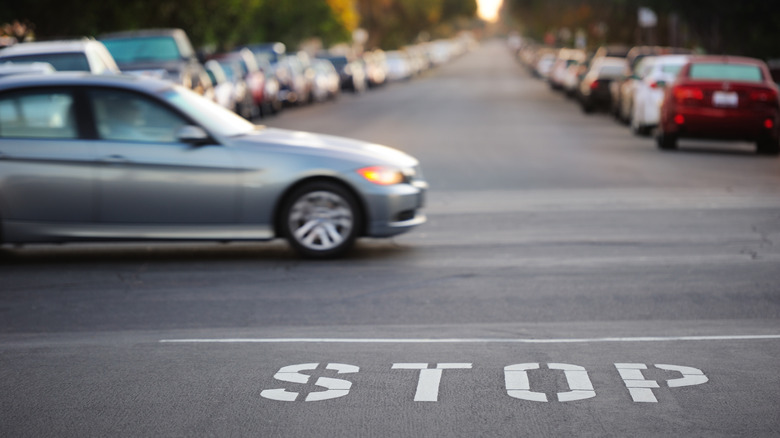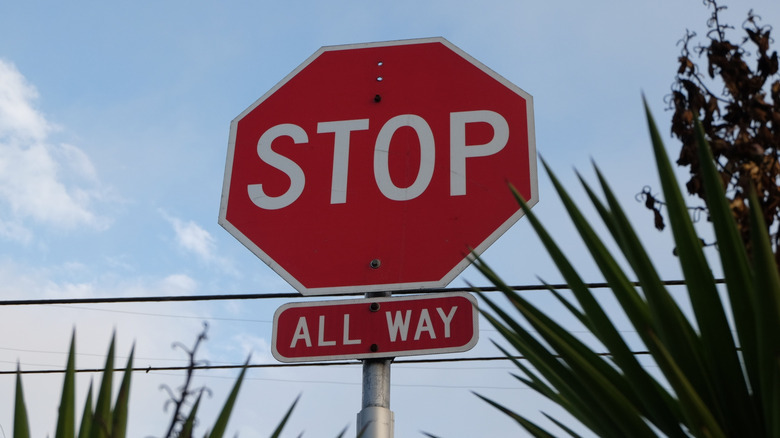What Does 'Right Of Way' Mean While Driving And Who Has It At A Four-Way Stop?
Whether you're a soon-to-be legal driver who is just learning how to navigate the roadways or a seasoned freeway king who's logged thousands of miles behind the wheel, keeping track of the various laws of the road can be a daunting task. Confusing traffic signs and the United States' strangest driving laws don't help, either. Many drivers would likely agree that right of way regulations rank among the more confusing concepts, especially when you first begin driving.
In fact, we'd wager that there are quite a few drivers — both new and experienced — who don't know precisely what the term "right of way" means. While we've long had a broad understanding of the term ourselves, we still had to do a little digging for the right of way's exact meaning in regards to traffic.
Merriam-Webster defines the right of way as, "a precedence in passing accorded to one vehicle over another by custom, decision, or statute," though even that seemingly clear and cut definition might be confusing for some. In essence, it relates to how a driver is required to cede their position on the road to other cars or pedestrians based on various factors. At intersections, yield signs can also be key in determining which cars and pedestrians have the right of way. One of the trickier right of way situations drivers will encounter is at a four-way intersection with stop signs.
Four-way intersections and more
When you arrive at any four-way stop along with another car, there are two key factors for drivers to consider when determining which vehicle is entitled to the right of way. The primary factor is which vehicle arrived at its designated stop sign first, as that vehicle is typically permitted to pass through said intersection before any others. There are, however, instances in which two or more vehicles might arrive at a four-way stop simultaneously. In this circumstance, the right of way is typically ceded to the vehicle on the right.
For many drivers, the right of way conversation is further complicated by the fact that the rules may vary from state to state. However, there are some situations in which said regulations are fairly cut and dry. For instance, it is generally known that pedestrians have the right of way when they cross through an intersection. Pedestrians are still required to make those crossings in clearly designated crosswalks whenever one is available. Likewise, pedestrians are required to obey all traffic signals indicating when they're permitted to enter an intersection at a traffic light and when they need to wait.
Traffic lights have largely squashed questions surrounding the right of way at intersections, as they dictate the order vehicles are permitted to advance. But left hand turns at green lights can be tricky. The laws in virtually every community state that oncoming vehicles have the right of way over any wanting to turn.

